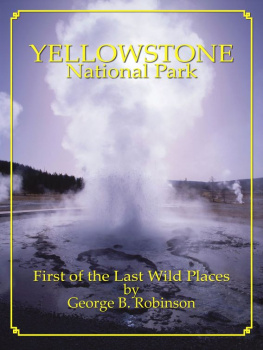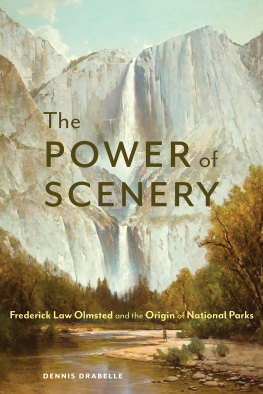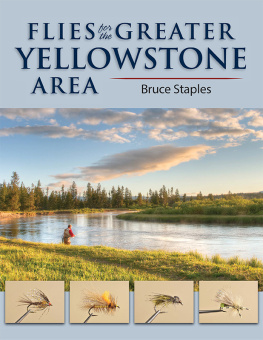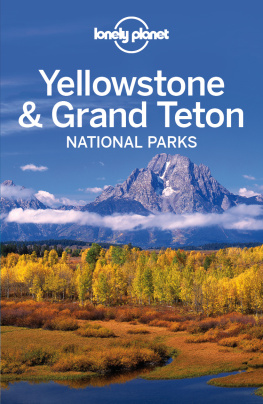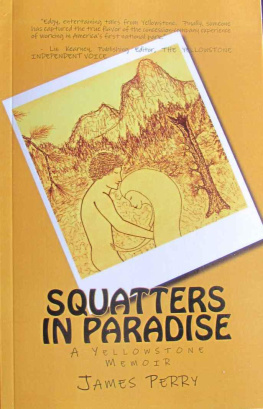JEFF HENRY WAS BORN IN NORTHERN PENNSYLVANIA BUT HAS LIVED his entire adult life in or near Yellowstone National Park in southern Montana and northern Wyoming. He has worked various jobs in and around Yellowstone Park for the past forty-five years, including as a fishing guide, wildlife researcher, tour guide, resource manager, park ranger, and winterkeeper of the parks lodges. He is the author and photographer of Survive: Snow Country (FalconGuides, 2016), The Year Yellowstone Burned (Taylor, 2015), The Yellowstone Winter Guide (Roberts Rinehart, 1993), Snowshoes, Coaches and Cross Country Skis: A Brief History of Yellowstone Winters (Roche Jaune Pictures, 2010), as well as nearly a dozen other books he has produced, some on his own and others in conjunction with other authors. Jeff lives in a log house of his own construction on the banks of the Yellowstone River just a few miles north of Yellowstone National Park, and still works winters in the park as a roof shoveler and winterkeeper for Yellowstone General Stores and Yellowstone Forever.
WHEN I FIRST CAME TO YELLOWSTONE, I found it a beautiful and exciting place, as I knew it would be from the books and maps I had studied beginning pretty much as soon as I could read. For me Yellowstone is still a beautiful place, but that place is now an interwoven fabric of countless memories of thrilling, inspiring experiences I have been fortunate enough to have had here, and also the memories of the people with whom I had those experiences. Its still the place, but also the experiences and the people, all blended into one marbled mix.
In a very real sense I began collecting information for this book as soon as I arrived to take my first job in Yellowstone on May 25, 1977. Therefore, I would like to acknowledge the people who helped me at each stage of my Yellowstone career. Many of the names below are of people who are no longer living, and so my expressions of gratitude will not reach them. My hope is that there are still living friends and relatives of those people who have passed, and that the living will see this list and understand how much I appreciated the help and friendship of those who are gone. Living and passed, I hereby offer a sincere thank you to all the people listed in the acknowledgments below.
For my time as a fishing guide on Yellowstone Lake, working out of Bridge Bay Marina, I would like to thank Jeff Mosier, Karl Bittler, Tom Hansen, Rick R. B. and Kathy Braune, Kate and Ron Conan Wilson, Joel Henry, Phil Cooper, Lyle Benefiel, Johnny Blair, Neil Rowe.
For the years I spent working as a maintenance man, heavy laborer, and truck driver for the Engineering Division of the Yellowstone Park Company, as well as a short time for its successors, I would like to thank Dallas Proffit, Todd King, Jim Peaco, Jeff Olson, Herb Majerus, Mark Hargis, Chuck Wyman, George Swim, Gary Durfey.
The jobs I had working for the Interagency Grizzly Bear Study Team brought some of the best experiences I have ever had. For those experiences and for what I learned from them, I thank Dave Mattson, Mark Haroldson, Kerry Gunther, Gerry Greene, Steve and Marilyn French, Jamie Jonkel along with Jamies parents Chuck and Joan Jonkel, Dan Reinhart, Kevin Frey.
For my time working as a park ranger, I thank John Lounsbury, Mark Marschall, Mona Devine, Les Inafuku, Jim Sweeney, Joe Fowler, Sandi Fowler, Rick Hutchinson, Dan Krapf, Bob Mahn, Jennifer Whipple, Gary Dub Kennedy, Rick Bennett, Les Brunton, Bob Duff, Bob Jackson.
For my time working on a coyote research project on Yellowstones famed Northern Range, I thank Bob Crabtree, John Shivik, Brian Kelly, Greg Zip Zoppetti, Craig Perham, Pat Terletsky, Eric Gese, Minette Johnson, Scott Relyea.
Without any question winterkeeping in Yellowstone has been my passion for more than forty years, and thus has been the best job I have ever had. I want to thank Patrick Povah, Herb Vaughn, Bill Berg, Steve Fuller, Bill Powell, Jerry Bateson Sr., Gerry Bateson Jr., Cliff Hartman, Dan Beadle, Dale Fowler, Jim McBride, Chuck McNabb, Jenny Wolfe, Ron Wilkes, Erin Benicke, Jason Fatourous, Lou Smith, Holt Rawlings, Pete Donau, Derek Zwickey, Derek Johnston, Jeff Guengrich, Hal Broadhead.
For the many years I spent shooting photographs, researching Yellowstone history, and writing articles and books, I would like to thank Jim Peaco, Aubrey Haines, Tim Daly, Jackie Jerla, Jerry Brekke, Larry Lahren, George Bornemann, Leslie and Ruth Quinn, and especially Lee Whittlesey, retired official historian of Yellowstone National Park and the undisputed dean of Yellowstone history.
For general Yellowstone friendships not related to employment in the park, I want to thank Mark Doc Watson, Mike Bryers, Kathryn Bornemann, Derek Johnston, Mark Ringo, James Malone, Clark and Monica Baumgarz, Kevin Gilbert, Lisa Culpepper, Crystal Cassidy, Steve Blakeley, Louise Mercier, and Connie Dover. I also want to thank Arden Bailey and Erica Hudgings of Yellowstone Expeditions in West Yellowstone, Montana, for their friendship and for the countless times they rendered practical aid for my mechanical breakdowns and other mishaps. And there are many others.
Specific thanks with regard to this book project are due to Rick Rinehart, executive editor at Lyons Press; James and Lynne Bama for their friendship and for allowing me to use some of Jamess superb art; Gary and Marlys Carter for decades of friendship and for permission to use some of Garys signature paintings of Yellowstone subjects; Mike Bryers for his friendship and his fine artwork depicting historical scenes in Yellowstone; Bob Smith for sharing some of his wealth of information regarding Yellowstone geology and also allowing me to use some of his academic illustrations; Eric Boyd for his friendship and also for furnishing me with a photograph of his geothermal research work in Yellowstone; Andrew W. Weiland, PhD, Cultural Resources Program manager at Hopewell Culture National Historical Park in Chillicothe, Ohio, for photographing the exquisite artifacts in that parks collection that were wrought centuries ago from Yellowstone obsidian; Todd Fredricksen for his friendship and for allowing me to use his powerful art; Doug Smith of the Yellowstone Wolf Project for his friendship and for providing me with photographs of his work; Jim Peaco, official photographer for Yellowstone National Park and one of the worlds nicest guys, for helping me find certain photographs relating to the parks history, and for further supplying me with information about the same; Cam Sholly, superintendent of Yellowstone National Park, for cutting through bureaucratic red tape to allow me to use certain illustrations in this book; Erin White, a hydrologist for Yellowstone National Park, for furnishing me photographs of herself at work in the park; Jackie Jerla of the Yellowstone National Park archives for helping me countless times with research into the parks history and other subjects; and Lee Whittlesey for his unflagging willingness to share his wealth of knowledge regarding the history of Yellowstone, and also for writing the foreword to this book.

Sunrise over the Potts thermal area on the west side of Yellowstone Lake. This sunrise was colored red by smoke from regional forest fires, and with some imagination the redness combined with the rising steam conjures thoughts about the explosion of the great Yellowstone caldera, a cataclysmic event that happened about 640,000 years ago. Indeed, Yellowstone Lake itself fills a portion of the crater that did not refill with lava flows that oozed forth in the wake of the titanic eruption. Given the lakes elevation of 7,733 feet above sea level, it is remarkable that there is enough land that is higher in elevation to catch enough rain and snow to fill the lakes basin. JEFF HENRY/ROCHE JAUNE PICTURES, INC.


